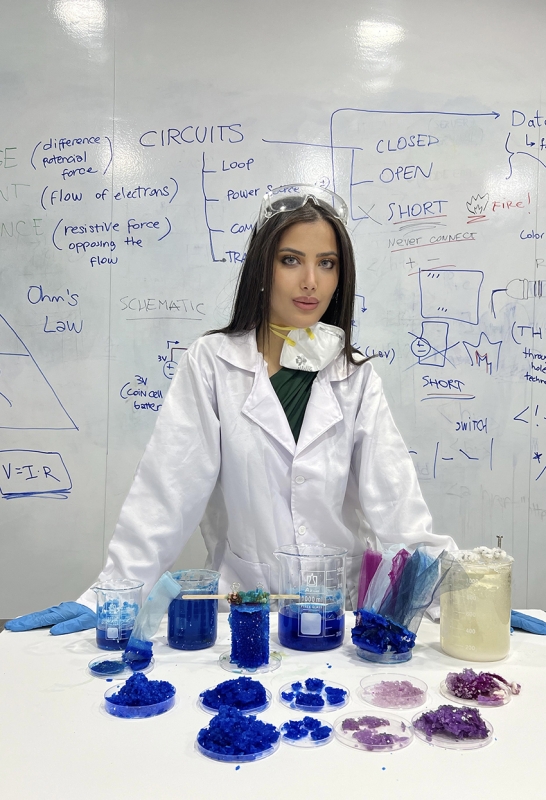Archaeologists in Kafr Qasim have uncovered a 1,600-year-old Samaritan agricultural estate with colorful mosaics, an olive oil press, and a ritual bath. This rare discovery reveals how ancient communities lived sustainably—growing food locally, reusing materials, and balancing faith with farming—offering lessons for modern climate resilience in the Middle East.
The post 1,600-Year-Old Samaritan Farm Estate Found in Kafr Qasim Shows How Ancient Communities Lived Sustainably appeared first on Green Prophet.
Designer Batoul Al-Rashdan, an engineer from Jordan, creates plant-based materials, which she turns into clothes and accessories. Via Batoul Al-Rashdan (UNEP)When Jordanian designer Batoul Al-Rashdan tells people she makes clothes out of ground olives and onion peels, she gets more than a few raised eyebrows. “It’s definitely a conversation starter,” laughs the founder of Jordanian fashion house Studio BOR
“But once people learn more about it, they are like, ‘Okay, interesting.’”Al-Rashdan’s plant-based dresses, bags, and accessories have walked runways from Paris to Dubai and earned her a string of awards. Unlike the synthetic textiles that clog landfills for decades, her creations are designed to decay. “These clothes are not meant to last forever,” she says.
“They have served their purpose. It’s okay for them to go away.”An architectural engineer by training, Al-Rashdan began experimenting with plant-based textiles in 2015. She learned to transform food waste—like beetroot skins, olive pulp, and onion peels—into biodegradable materials. Some are fed into a 3D printer to make handbags, coins, and jewelry; others are spun into fabrics for high-fashion dresses.
“Iris of the sea” 🤍 a 3D-printed dress from biodegradable material inspired by the breathtaking contours of the Dead Sea’s crystalline formations and Jordan’s national symbol, the Black Iris.
One standout piece: a collaboration with designer Tony Ward on a wispy, biodegradable gown that debuted at Paris Haute Couture Fashion Week.
Every year, the fashion industry produces 92 million tonnes of textile waste—the equivalent of a garbage truck full of clothes dumped or burned every second. Much of it ends up in developing countries, releasing microplastics and toxic dyes into the environment (read more).
According to UNEP, the sector is also responsible for up to 8% of global greenhouse gas emissions and is one of the most water-hungry industries on Earth.
Al-Rashdan’s work has been boosted by the West Asia Sustainable Fashion Academy, launched by the UN Environment Programme in 2021. The academy has trained over 150 designers, fashion students, and small businesses to use sustainable fabrics, extract natural pigments, and rethink waste.
Kylie Minogue wearing a parametric 3D printed on fabric biodegradable dress
Fellow participant Hazem Kais, head of Beirut’s GoodKill label, dyes garments with sage, walnut, and pomegranate instead of chemical dyes. “If we can dye clothes this way, why wouldn’t we?” he says.
For Al-Rashdan, every sustainable choice—no matter how small—counts. “I’m hopeful,” she says. “Every change, even a small one, matters.”
Further reading on Green Prophet
The post She turns Jordan’s onions and olives into fashion appeared first on Green Prophet.




